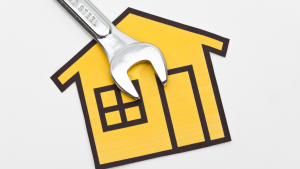 Now that the historic Inflation Reduction Act (IRA) has been signed into law, many consumers are wondering how they can benefit from the money-saving, clean energy provisions in the bill. The IRA represents much needed relief at a time when 1 in 6 homes in America are behind on their utility payments.
Now that the historic Inflation Reduction Act (IRA) has been signed into law, many consumers are wondering how they can benefit from the money-saving, clean energy provisions in the bill. The IRA represents much needed relief at a time when 1 in 6 homes in America are behind on their utility payments.
Below are the major ways consumers can take advantage of the new legislation:
Home Energy Efficiency Tax Credits
Each year for the next decade, consumers can claim a tax credit for 30 percent of the cost of qualified projects that make their home less drafty or improve energy efficiency, to an annual limit of $1,200 credit. These incentives include:
- Up to $600 for highly efficient central air conditioners; electric panel upgrades; and water heaters, furnaces and water boilers that run on natural gas, propane or oil. These products must meet Consortium for Energy Efficiency’s highest efficiency tier.
- Up to $150 for a home energy audit
- $600 for new energy-efficient exterior windows or skylights
- $500 for exterior doors
Heat Pumps and wood burning stoves
If you purchase an energy-efficient electric or heat pump for space heating and cooling or a heat pump water heater, you qualify for 30 percent tax credits up to $2,000. Tax credits are also available for highly rated stoves and boilers that generate heat from burning wood or other biomass feedstocks.
The credits for heat pumps or biomass stoves and boilers don’t count against the $1,200 annual limit for the home energy efficiency tax credit detailed in the previous section.
Electrification rebates
The Inflation Reduction Act includes $4.5 billion over 10 years for state and tribal programs that discount or fund electrification and efficiency projects or appliances for lower and moderate-income households. The bill defines lower-income households by annual incomes less than 80 percent of the area median income. Moderate income is defined by annual income no greater than 150 percent of the median. (Learn how to find your area median income.)
The lowest-income households are eligible for point-of-sale rebates covering the full cost of certain electrical appliances or efficiency projects. Moderate-income individuals and families can get half off. The cumulative rebates available to each household total $14,000.
The law sets rebate caps for selected electric product classes. There is up to $8,000 available for purchasing space heating and cooling heat pumps. For heat pump water heaters, the maximum is $1,750. For electric stoves, it’s $840.
The high-efficiency electric home rebates should also cover half or all the cost of upgrading electric panels up to a $4,000 limit. Other covered services are electrical work, with a $2,500 maximum, and insulation projects, up to $1,600.
Solar, batteries and geothermal
Thanks to the new law, the existing 22 percent solar panel tax credit has been immediately bumped to 30 percent for the next decade. This tax credit is available now, so it’s a great time to look into your local solar group-buy programs, like Grow Solar Chicagoland. There’s also a tax credit for home battery units with more than 3 kilowatt-hours of storage capacity, allowing the benefits of solar generation to stretch into shorter winter days. For more information, visit CUB’s Clean Energy page.
Electric Vehicles
Before the IRA, a helpful $7,500 tax credit was limited to the first 200,000 EVs a manufacturer sold, which meant it no longer was applicable to vehicles sold by companies, such as General Motors and Tesla, that had already reached the cap. The IRA does away with those caps. Used electric vehicles are eligible for a tax credit of $4,000 or 30% of the vehicle’s value (whichever’s lower). However, there are new eligibility requirements:
- Domestic Manufacturing: Vehicle must be assembled in North America, with more specific battery production requirements
- A portion of the battery parts must be made in North America
- A percentage of the minerals that go into that battery production must be mined domestically or in countries with a free-trade agreement with the U.S.
- Income eligibility requirements: To qualify, individuals should make under $150,000 and couples under $300,000 a year.
- Cost: The law caps the value of new sedans eligible for the credit at $55,000 and trucks or SUVs at $80,000.
Consumers will be able to get these credits at the dealership when purchasing a car starting in 2024. Until then, consumers can receive partial credit ($3,750) for domestically made vehicles.
Note: If you put money down on a new EV before the act was signed but are still waiting on delivery, you can still qualify for tax credit with the new eligibility requirements. See the Department of Energy’s list of eligible EV models, the IRS’s updated guidance for EV
Buyers, and CUB’s EV Buyer Handbook.
For more information, check out these resources:
- Read CUB’s previous blog posts on IRA:
- Check out Rewiring America’s IRA savings calculator for qualifying household information.
- See the US Department of Energy list of currently qualifying electric vehicles.
- Read the White House’s fact sheet on the IRA and Illinois.
- Listen to WBEZ Reset’s conversation with CUB Executive Director David Kolata on the IRA.

